#sierra belmont icons
Text
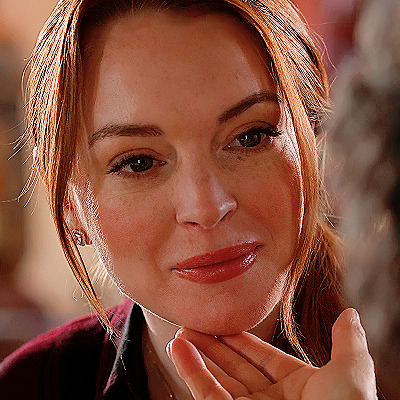













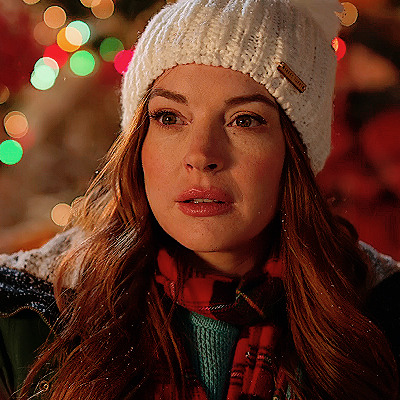
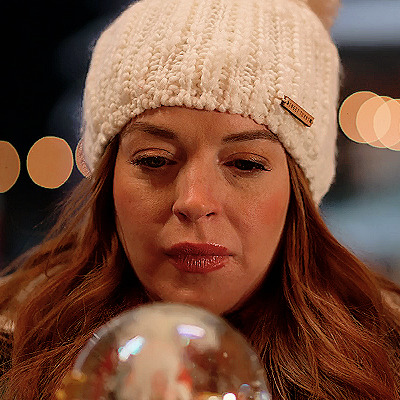
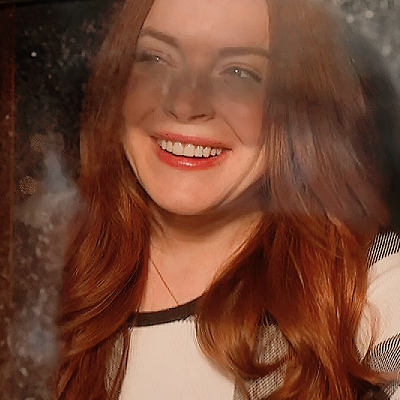


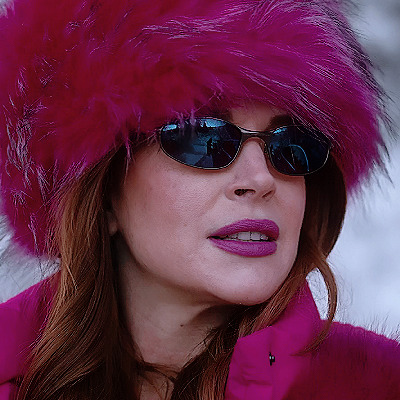

sierra belmont ; falling for christmas icons
like or reblog if u save
don���t repost
action made by @miniepsds + psd made by @miniepsds + screencaps made by @neverscreens
#icons#sierra belmont icons#lindsay lohan icons#falling for christmas icons#christmas icons#xmas icons#sierra belmont#lindsay lohan#falling for christmas#christmas#xmas
25 notes
·
View notes
Text















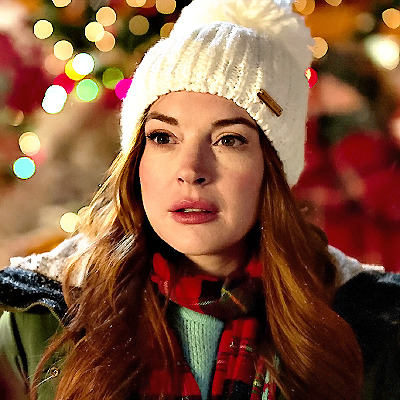




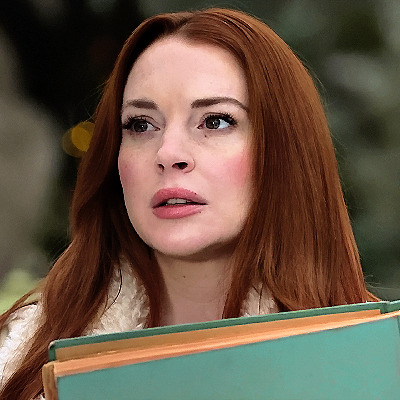
★﹐lindsay lohan as sierra belmont in falling for christmas (2022).﹗﹑
+psd by the talented @miniepsds & screencaps by the amazing @neverscreens ♡
#lindsay lohan icons#sierra belmont icons#falling for christmas icons#icons#christmas icons#xmas icons#holiday icons#holidays icons#film icons#movie icons#movies icons#cinema icons#lindsay lohan#sierra belmont#falling for christmas#christmas#xmas#holiday#holidays#film#movies#romance#comedy#romcom icons#romcom#romance icons
21 notes
·
View notes
Text


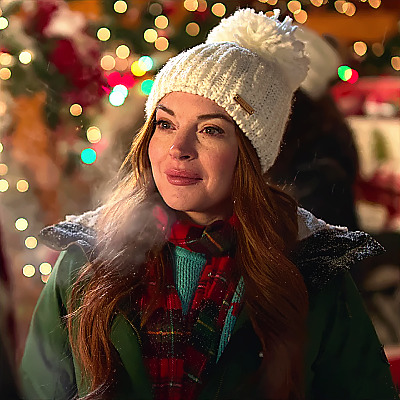






Lindsay Lohan in Falling for Christmas, 2022.
#icons#lindsay lohan icons#christmas icons#falling for christmas icons#falling for christmas#lindsay lohan#sierra belmont icons#movies icons#christmasedit#moviesedit#filmedit#twitter icons#girls icons#icons without psd#icons sem psd#coral#woman icons
157 notes
·
View notes
Text
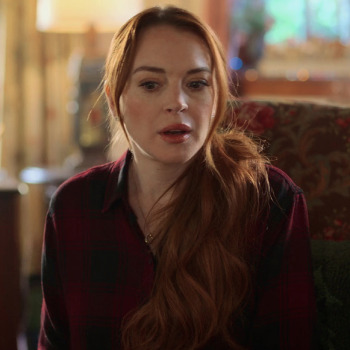
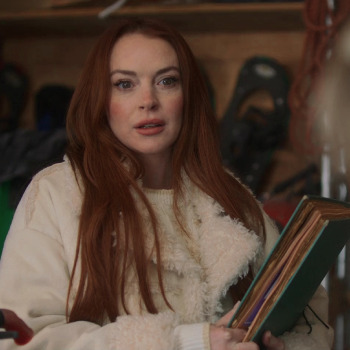







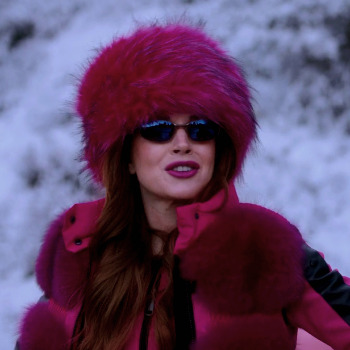

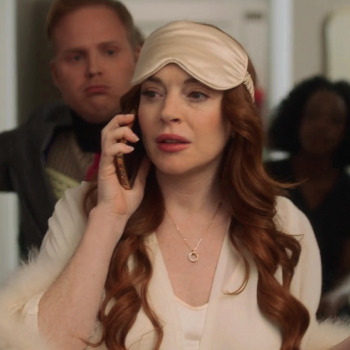
Sierra Belmont “Falling for Christmas” icons
‒ like or reblog if you save
#sierra belmont#sierra belmont icons#lindsay lohan#lindsay lohan icons#falling for christmas#falling for christmas icons#movies icons#filmes icons#xmas#xmas icons#christmas icons#christmas#movies#filmes#icons
14 notes
·
View notes
Photo

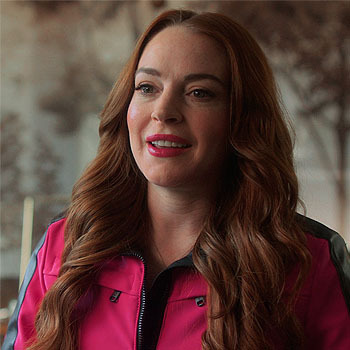





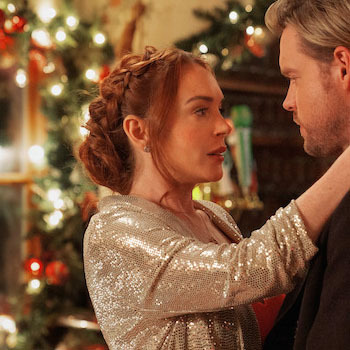

#icons#lindsay lohan#lindsay lohan icons#icons lindsay lohan#netflix icons#icons with psd#girls icons#falling for christmas#falling for christmas icons#sierra belmont#sierra belmont icons
43 notes
·
View notes
Text


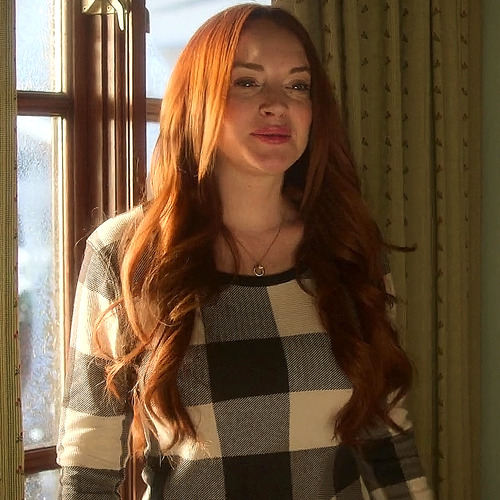


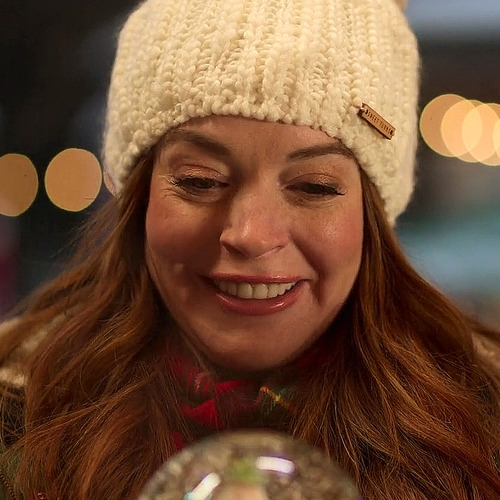
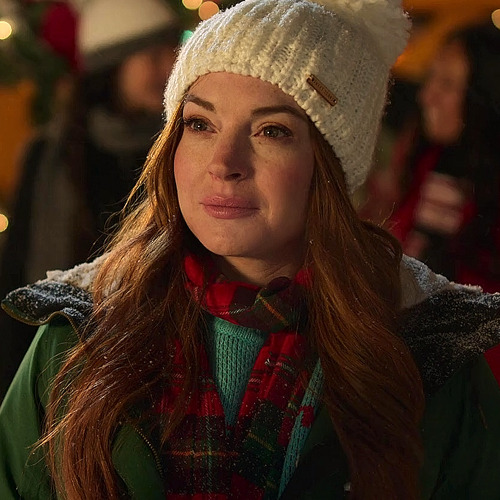
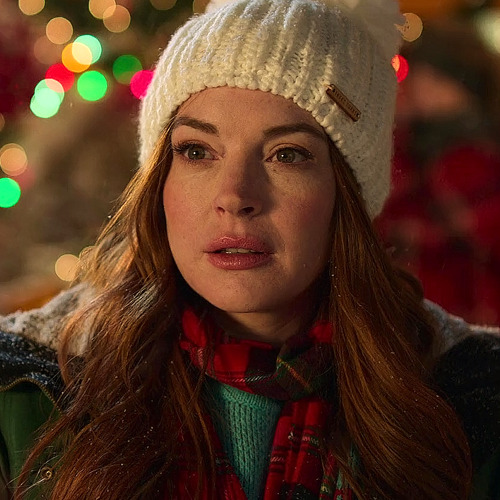

sierra belmont icons.
#icons#lindsay lohan icons#christmas icons#falling for christmas icons#falling for christmas#lindsay lohan#sierra belmont icons#movies icons#christmasedit#moviesedit#filmedit#twitter icons#girls icons#icons without psd#icons sem psd#woman icons#icons lindsay lohan#netflix icons#icons with psd#sierra belmont#netflix#mean girls#meangirlsedit#freaky friday#the parent trap#georgia rule#confessions of a teenage drama queen#get a clue#2000s nostalgia#2000s movies
44 notes
·
View notes
Photo

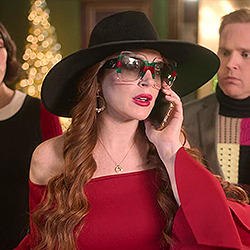

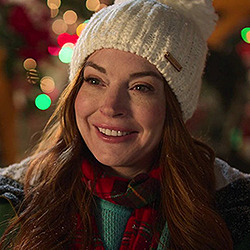





Lindsay Lohan as Sierra Belmont in “Falling For Christmas” icons.
like if you save or use.
#lindsay lohan#lindsay lohan icons#falling for christmas#netflix#mean girls#meangirlsedit#freaky friday#the parent trap#georgia rule#confessions of a teenage drama queen#get a clue#2000s nostalgia#2000s movies#2000s films#film icons#filmedit#sierra belmont#chord overstreet#icons#Twitter Icons
111 notes
·
View notes
Text
Flee for Your Life? Wildfires transform hiking in California's mountains
This is an excerpt from an article published on August 21, 2022 in the Santa Cruz Sentinel. I wish so many of our posts were not related to wildfires but fires have become a critical issue in trip planning and trip safety. Make sure you read to the recommendations at the end of the piece.
By Ethan Baron
Andrew Schrock woke around midnight smelling smoke on a backpacking trip late last month in California’s far north.
“I heard what I thought was rain but was ashes on the tent,” said Schrock, 43.
Using a satellite-based device from the Klamath National Forest near the Oregon border, he texted family and friends back home to find out what was happening – but “no one was up.”
He’d had cell service a mile back along the iconic Pacific Crest Trail that stretches from Mexico to Canada, so he set out alone in the dark, got online, and discovered that the McKinney Fire – which has since grown to more than 60,000 acres, killed four people and required the rescue of 60 hikers from the California side of the trail – had ignited behind him to the south the previous afternoon.
Ask anyone who hikes in California’s mountains about wildfires and you’ll likely get an earful about canceled trips, detours, lung-burning smoke and, possibly, harrowing escapes. Backcountry travelers are increasingly finding themselves on the dangerous edge of a changing climate that is driving drought, parching forests, spreading tree-killing beetles and altering weather patterns. Add in heavy vegetation buildup from decades of fire suppression, and you have frequent, ferocious forest fires that scramble hikers’ best-laid plans and demand new tactics for staying safe.
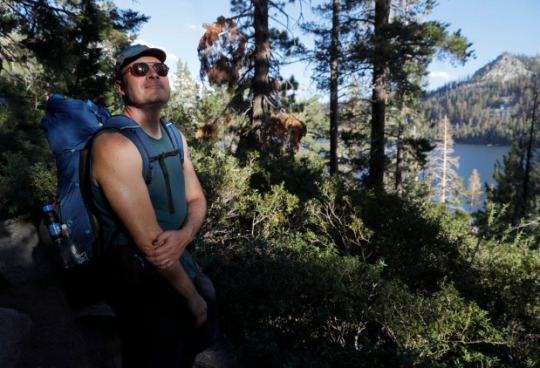
Schrock, of Long Beach, flew from Ashland, Oregon, to Fresno and then caught a bus to Yosemite to get back into the Sierra Nevada and finish his vacation covering more ground and enjoying the wilderness on his multi-year quest to complete the Pacific Crest Trail, he recalled while taking a snack break beside Lower Echo Lake near Lake Tahoe.
Dallan Clancy of Belmont, 68, finishing up a day hike 100 miles west of Sacramento at Carson Pass, said he had to cancel an overnight trip last September in the southern Sierra because the U.S. Forest Service shut access to all but one of California’s national forests over fire risks, including what the agency called “fire behavior that is beyond the norm of our experience and models such as large, quick runs in the night.” Clancy said he and four friends are aiming to do the trip this year, “unless it gets really bad.”
“We’ve always made note of escape routes, but on this trip, we actually planned our escape routes. We wanted to know the routes we could take to get out to a road,” said Jack Daro, a Southern California musician taking a break at Carson Pass during a backpacking trek to Yosemite National Park.

Hikers in years past “just went and did whatever you wanted to do wherever you wanted to go,” Wilkinson said. But 2020 marked a transformation, with the million-acre August Complex Fire, the Creek Fire northeast of Fresno that led to helicopter evacuations of hundreds of people including hikers on the John Muir Trail, and other massive blazes launching California into the age of mega-fires, Wilkinson said.
Nine of California’s 20 biggest fires since 1932 have occurred in the past three years, torching 4.1 million acres, according to Cal Fire. This year’s five biggest blazes have burned 116,000 acres, and “we’re just now getting into peak wildfire season,” Wilkinson said.
U.S. Forest Service spokeswoman Adrienne Freeman noted that fire can move much faster in today’s baked-crisp forests. “The window between OK and not OK,” Freeman said, “is becoming shorter and shorter.”
Backcountry journeyers who think seeing smoke but no flames means they’re fine may be mistaken, Wilkinson said. “Fire can move like a freight train, much faster than a person can run.”
Some hikers have dramatically changed the way they travel. Loetitia Saint-Jacques, 50, a Tahoe City veterinary technician, was on an overnight trip this month near South Lake Tahoe. Before the mega-fires, she and her companions would take long trips into deep wilderness. “We don’t go as remote now,” Saint-Jacques said. “Now it’s shorter trips. We do overnights, instead of five to eight days.”
Long-distance speed-hiker Ella Raff had multiple run-ins with wildfire and its fallout after embarking on the Pacific Crest Trail in June to walk from Mexico to Canada. Last month, the Washburn Fire in Yosemite shrouded her in smoke for two days. “I was just breathing heavy smoke 24/7. It’s not very fun,” said Raff, 29, of Portland. Farther north in California, traversing 85 miles of trail charred from last year’s nearly million-acre Dixie Fire left Raff covered in ash and dismayed by a “surreal” landscape with little animal life.

Soon after, she smelled smoke from the McKinney Fire. As she was nearing the Oregon border, authorities shut the trail ahead. More than 100 miles of the route remain closed, with the fire, which started July 29, now almost contained. Raff made her way to Portland, then to Washington to hike the trail southward from Canada.
Changing jumping-off points, routes, destinations, or timing to cope with uncertainty about fires is now routine for hikers in California. The Caldor Fire, which ravaged 220,000 acres southwest of Lake Tahoe last year from August to October, forced Truckee artist Danae Anderson, 63, to cancel three backpacking trips. “Everything was too smoky up here,” said Anderson, hiking beside Lower Echo Lake. She went to Yosemite instead.
Reckless target shooting by a father and son allegedly caused the Caldor Fire. The inferno’s scar stretches nearly 50 miles southwest of Echo Lakes in a swath up to 15 miles wide, much of it a blackened wasteland of lifeless trees, some downed, some standing without greenery, granite on many boulders shattered in places by the intense heat. More than 80 miles of the Pacific Crest Trail were closed from the fire’s start last August until early this year. Hikers passing through such areas may find water scarce, and standing dead trees can pose a deadly toppling hazard, said Matt Rump, a trail stewardship staffer for the Pacific Crest Trail Association.
Crews take down the most dangerous trees, but because there are so many dead, and they provide important wildlife habitat, officials accept some risk to hikers, under the calculus that “if you get whacked, it’s your time,” said Cheryl Bailey, 73, a volunteer for the Tahoe Rim Trail Association, as she walked along the 2 1/2 miles of the rim trail that run through the Caldor scar and that she’s been helping rebuild.
Some hikers console themselves with fire’s importance to forest health, but many of today’s blazes burn so hot they kill trees accustomed to lower-intensity fires.
In the Echo Chalet store where Schrock, who fled the McKinney Fire, bought snacks, cashier Georgia Sprague, 22, chatted with the trekkers whose ebbs and flows depend on fires and smoke. Many expressed urgency over climate change.
“They feel a lot of a push to get out,” she said, “and see the world before it burns up.”
Wildfire safety tips for hikers
Recommendations for staying safe while hiking in the age of mega-fires:
Check websites such as InciWeb for fire information and PurpleAir for air-quality information before, and if possible during, backcountry trips.
2. Give friends and family your itinerary, always know your location and pay close attention to your surroundings in case you need to retreat.
3. Know whether fires are prohibited where you’re going.
4. Carry paper maps in addition to any digital maps or apps.
5. Use cell phones and satellite-based devices to monitor weather, fires, wind, air quality and alerts such as Red Flag wildfire warnings, and to stay in close contact with people not in the wilderness who may have better access to weather and fire information. Many satellite-based messaging devices such as the popular Garmin inReach also act as rescue beacons; trekkers wishing to stay less connected may prefer personal locator beacons that are only for emergency rescue.
6. Pay attention to signs at trailheads and trail junctions.
7. Gather crowd-sourced fire and trail information from reliable websites and forums.
8. Carry an N95 mask in case of smoke.
9. Watch the sky for smoke, and use your nose to detect it.
27 notes
·
View notes
Text
The Ultimate One-Week Pacific Northwest Road Trip Itinerary • The Blonde Abroad
Jenna of Tales of the Vineyards recently traveled to Napa Valley, California for a 5-month wine harvest job. After wrapping up long hours working in the cellar and scrubbing her wine-stained hands, another epic adventure was all she had on her mind.
Jumping in a campervan with her harvest best friend Sarah, she journeyed out on the ultimate one-week Pacific Northwest road trip. Here’s Jenna with all the info!
As a first-timer on the West Coast, my list of places to visit and things to do was infinite. Coming from South Africa, a country that’s only a tenth of the size of the United States, it’s easy to forget the sheer size of one US state.
All I knew was that I was ready for a USA road trip of a lifetime (another first) and wanted to tick off at least one national park from my list.
After chatting to a couple of my friends in Napa and doing my own research, I came to the conclusion that venturing out to the usual suspects of California like Yosemite and Big Sur just wasn’t going to cut it.
Sitting on the couch one night with my housemate, she mentioned Glacier National Park in Montana and that was it—Sarah and I were going to drive over 1,400 miles from San Francisco to Glacier National Park with a few stops along the way…in winter!
Here’s the ultimate one-week Pacific Northwest road trip itinerary!
The Best Time to Visit
Truth be told, winter isn’t everyone’s cup of tea. While the Pacific Northwest never reaches extreme summer temperatures, if rain, snow, and -17 degrees Celsius don’t sound like a fun time, then be sure to schedule this road trip for summer.
No matter the season, the Pacific Northwest has beauty around every corner.
Whether it’s sunny days wandering through the lush vineyards of the Willamette Valley in Oregon, frequenting the summer markets of Portland, or trekking through the snow-covered mountains of Glacier National Park, every season offers something special.
Top Spots to Visit on a Pacific Northwest Road Trip
Whether you’re starting your road trip in California and seeing some of the top sites on Pacific Coast Highway, or you’re wanting to explore all of the West Coast—I’ve got a number of places for you to check out!
Read More
Traveling in a Campervan in Winter
Going on a road trip in a campervan in winter seems daunting (and foolish) to most, but really, it’s doable as long as you go prepared. An extra duvet, a warm jacket, fairy lights, and plenty of coffee go a long way!
The main reason we chose to get a campervan was the freedom it would give us in staying wherever we wanted, especially when it came to National Parks. We rented our campervan from Lost Campers based in San Francisco as their options were extremely affordable and included unlimited miles.
We went with their Sierra Class van which included:
A bed for 2 with linen
Kitchen kit (pots, coffee mugs, cups, cutlery)
A double burner stove (hello, coffee!)
A sink with water
Storage space
Battery-operated cooler box
After a few friends saying we were crazy to even think about sleeping in a campervan in winter, we decided to bring along an extra duvet and blanket just in case. When you hit those negative temperatures, these definitely come in handy.
Traveling and sleeping in a campervan has its highs and lows. I have no doubt that getting one during summertime would definitely be a little easier – sleeping, changing, and socializing in a small van can be tricky to navigate when you’re trying to avoid stepping foot out into snowy or rainy weather.
With that said, it really just adds to the adventure and we wouldn’t have changed a thing. It allowed us to be flexible, to always have our things close by, and made us realize how little you need to go on an unbelievable trip.
Simple things like standing to change your clothes or rummaging through a cupboard start to feel like luxuries.
Helpful Tip:
Road tripping in winter, your chances of coming across snowy roads are pretty high. Make sure to include snow chains in any sort of car or campervan rental and know how to put them on – you don’t want to be caught off guard and left in the middle of nowhere making friends with the local moose.
Day 1 – San Francisco to McMinnville
Via I-5 – Approximately 9.5-Hour Drive
Eager to get the show on the road, start your day early and knock a big distance out of the way. Take in the beautiful scenery on the drive with snowy mountains in the distance, lush forests lining the highway, and an even chillier bite in the air.
On arrival in McMinnville, a historic little town in the heart of Oregon’s wine country, throw on a jacket and wander its streets adorned with twinkling lights. Explore one of the many bars before settling in at a cozy restaurant.
After a well-deserved meal and with hopefully a second wind kicking in, pop into the Conservatory Bar. Serving up incredible cocktails and local beers, they’re known for their winter warmers that are perfect for combatting the outside chill.
If you see their hot buttered rum on the menu, do yourself a favor and order one right away.
Suggestions:
One of the many Willamette Valley wineries
Day 2 – McMinnville to Portland
Via Pacific Highway W – Approximately 1-Hour Drive
Before hitting the road, grab a coffee and breakfast on NE 3rd Street at Community Plate (pictured above). A cute, upbeat cafe that’s great for a quick bite to eat or something a little slower paced if you’re not in any rush.
Oregon is known for producing incredible Pinot Noir wine (and plenty others), so a trip to a couple of wineries on your way to Portland is a must for any wine lover. Make sure to make an appointment beforehand and be prepared for unreal photo opportunities.
After a day of vino and vineyards, arrive in the beautiful city of Portland. Known for its hipsters and coffee culture, grab a cuppa joe on your way to the Pearl District for dinner. Wander down NW 13th to admire the refurbished deep-red buildings before settling down for a tasty meal.
Willamette Valley Wineries to Visit:
Bergström – Incredible Pinot Noir and Chardonnay using fruit from four of the Willamette Valley’s best appellations
Lingua Franca – Producing wines that reflect the true expression of their fruit, Lingua Franca is known for their premium Pinot Noir and Chardonnay
Chateau Deluxe – For those looking for something special, Chateau Deluxe is a small producer creating seriously good Pet-Nat (natural sparkling wine)
Day 3 – Portland
Winter in Portland is guaranteed to be a wet one so make sure you’ve got a great waterproof jacket for wandering the streets.
Start your day at one of the many cute coffee shops scattered throughout the city or head straight to Mississippi Avenue for a bit of morning shopping. Browse the boutique stores or stop at The Meadow to stock up on delicious snacks for the road.
If you’re as big a fan of cheese as I am, take a drive to the Cheese Bar on SE Belmont Street for one of the best cheese boards of your life paired with a glass (or bottle) of local wine. Next up, head to Powell’s Books – the world’s largest independent bookstore – to grab an interesting read for the road ahead.
A culinary highlight and dinner-must when visiting Portland is Pok Pok in SE Division. Serving unbelievable dishes inspired by Thai street food since 2005, Ike’s Vietnamese Fish Sauce Wings and the Papaya Pok Pok salad are what foodie dreams are made of.
Day 4 – Portland to Seattle
Via I-5 N – Approximately 3-Hour Drive
Start your morning early for the 3-hour drive to Seattle. You’ll want to get there before the crazy afternoon traffic hits – something we definitely didn’t think about.
Although pretty rainy and gloomy during winter, don’t be fooled, Seattle never sleeps. Park your car for the night and hit the streets. Head to the George Washington Memorial Bridge to snap a picture with the famous Fremont Troll – a gigantic troll sculpture living under the bridge with roots in Norwegian folk culture.
Next up, visit the iconic Space Needle for unbelievable views. And if twinkly lights tickle your fancy, head there later at night to see the city light up – it’s open until 8 pm on weekdays and 9 pm on weekends.
Helpful Tip:
Seattle, especially in the city center, isn’t ideal when it comes to traveling in a campervan. Parking is a nightmare and driving up hills in rain and traffic can be super stressful. I’d suggest finding a hostel or hotel for the time that you’re there and to park your car in overnight parking. We found a great garage on 3rd Street for just over $50 for 2 nights.
Day 5 – Seattle
Like Portland, Seattle has become known as the “mecca of coffee” offering perfectly brewed coffee on almost every street.
Start your morning off on Cherry Street with a freshly baked pastry and a cup of coffee from Cherry Street Coffee House before strolling down to the waterfront. Take in views across Elliott Bay to the Olympic Mountains as you head towards iconic Pike Place Market.
Undoubtedly one of Seattle’s most-visited attractions, Pike Place Market is home to delicious seafood, fresh produce, and crafty stores. But watch out – don’t get in the way of the guys behind the seafood counters and their killer fish-throwing skills.
Every couple of minutes you’ll see fish casually flying through the air as they pass it jokingly between each other.
A quick 15-minute walk away, visit the must-see Olympic Sculpture Park. See impressive works from top contemporary artists with the Space Needle and the Olympic Mountains as your backdrop. And the best part – the park is free!
Would you take a look at all that snow?!
Day 6 – Seattle to Spokane
Via I-90 E – Approximately 6-Hour Drive
Rise and shine – today’s the day you head towards the Montana mountains!
While Google Maps may make the route from Seattle to Glacier National Park look doable in a single day, the snowy conditions of winter definitely throw a curveball. Start your day early with a pit stop at a grocery store on the outskirts of Seattle to stock up on essentials before heading towards Spokane for the night.
Take it slow on the roads and watch as your surroundings change. The snow gets thicker and the temperatures quickly start to drop as you get closer to Montana – Big Sky Country.
Once you reach Spokane, choose from a few campgrounds for the night and cozy up for a night’s rest before the final adventure to Glacier.
Day 7 – Spokane to Glacier National Park
Via I-90 E – Approximately 7-Hour Drive
Put on those woolly socks and light up the gas stove, a cup of coffee will be essential to knock off the chill and kickstart your day.
Get on the road early as the drive towards Glacier isn’t incredibly far but expect the icy roads of the pass and potentially snowy conditions to delay your trip by at least 2 hours.
Enjoy a leisurely drive through dramatic landscapes with towering mountains and frozen lakes passing by. The roads start to quieten down quite a lot, so make sure you’ve filled up with gas, have something packed for lunch, and are stocked up on food for your time in the park.
After a good couple of hours on the road you’ll finally reach Glacier National Park and boy, is every mile worth it!
Only a few roads are maintained over winter and the only area to stay in is at the Apgar Campground, so be prepared for maximum peace and quiet. Pick your spot amongst the snow overlooking the McDonald Lake and take in scenes that few people ever get to witness in their lifetime:
Deer wandering past, snow gently falling to the ground, and views for miles.
Helpful Tip:
Staying at the campground during winter is free and the Apgar Visitor Center is still operational and can help with any questions. There’s also a little souvenir shop that has a couple of snacks and serves hot drinks in case you run out.
Day 8 – Glacier National Park
Wake up cuddled under your duvet surrounded by complete beauty and tons of animal tracks! Start the day as slow as you like but coffee and warm breakfast comes highly recommended.
Glacier National Park over winter really is a place of serenity. With only a few hiking paths open and not much else to do, throw on your (waterproof) hiking boots and hit a path to enjoy the views and wildlife. This is truly the ultimate adventure if you’re wanting to immerse yourself in nature and avoid any crowds.
The rest of your time? Drink plenty of tea, catch up on some reading, do a little journaling, and enjoy the wonderland around you.
A Local’s Guide to Glacier National Park
If you’re thinking about heading to Glacier, you’re in for a treat. There’s a reason there were more than three million visitors there last year!
Read More
Shopping List
Pretty much your preparation shopping can be done at any sporting good store. Here are some of the key things to bring along!
Turn on your JavaScript to view content
Final Thoughts
Don’t be scared of seasons, you may just end up on the best adventure of your life.
Leading up to our trip, there were many occasions where I thought we were downright crazy to want to road trip in a campervan during winter. Yes, it can get a little crowded and yes, it was tough braving the cold especially when we hit Glacier and wanted to make a cup of tea.
But would we do it all over again? A thousand times, yes.
Our trip extended all the way down to Yellowstone, Zion, Vegas, and back up the coast to San Francisco – an epic journey that I’d recommend to anyone and everyone.
What are you waiting for? Pack those bags, rent that campervan, and get exploring.
Source link
قالب وردپرس
from World Wide News https://ift.tt/3fplGjJ
0 notes
Text
The Best Beercations for Every Type of Traveler
Well-versed beer travelers know that beer is the most consumed alcoholic beverage in the world and is relatively easy to find wherever you go. But finding the best destinations to plan a trip around beer takes ample research as well as experience.
From enthusiasts considering their first beer-focused vacation, to beer geeks ready for their next pilgrimage, VinePair picked the best trips for every type of beer traveler.
For First-Timers: Denver
Each October, thousands of beer lovers descend on Denver for the Great American Beer Festival, one of the world’s largest beer celebrations. It’s no surprise — Denver has long been considered a must-visit for craft beer lovers.
Spend a day in RiNo (River North Art District), where a string of small breweries offer different specialities. At Ratio Beerworks, artistic, laid-back vibes accompany Scotch ales and IPAs. Epic Brewing has everything from high-ABV, Belgian-style quads to one of the country’s first sour IPAs. Crooked Stave, famed for its wild, barrel-aged sour ales, has a location here, and Fort Collins, Colo., staples New Belgium and Odell Brewing also opened satellite locations here.
For Classicists: Belgium
A Belgian beercation is a must for any beer lover who is able to travel abroad. The country is small, but it’s brewing history is vast, inspiring many beer styles we drink in the U.S. today. Witbiers, farmhouse ales, and barrel-aged sour beers all originated here. A popular first stop is Brussels, the capital, home to the world-famous Cantillon. The city is also home to destination beer bars like Moeder Lambic and the tourist-friendly Poechenellekelder (The Puppet Cellar), the latter located steps from Belgium’s most famous statue, the Manneken Pis.
Antwerp, theoretically 40 minutes from Brussels by train (though there are often delays), combines ancient architecture, modern shopping, and the legendary De Koninck brewery, home of the annual Modeste Bier Festival that celebrates family-owned Belgian breweries. This year’s fest kicks off Oct. 5.
Antwerp also offers unforgettable beer bars such as Kathedraal Cafe and Kulminator.
For Road Trippers: Vermont
Vermonters drink more beer than most Americans, and we can’t blame them: Some of the country’s best beer is made here. The birthplace of the New England-style IPA is a pilgrimage for hazy and juicy IPA lovers requiring ample planning, patience, and gas mileage. Hill Farmstead, in Greensboro Bend, is considered one of the best breweries in the world. It’s also very much off the beaten path; visitors endure hilly dirt roads, sparse cell phone reception, and long lines to taste its hoppy brews on site. (Pro tip: Bring a growler.)
The Alchemist, in Stowe, kicked off the hazy IPA craze with its hopped-to-the-gills Heady Topper IPA. Less than two miles away, von Trapp Brewery offers Austrian lagers and small plates.
In Burlington, Zero Gravity offers a variety of German-style lagers, pale ales, and pizzas. Magic Hat, one of the state’s first craft breweries, holds it down here, too. Stop into the taproom for experimental brews you won’t find anywhere else.
For Beach Bums: San Diego
San Diego has been a haven for craft beer lovers since the 1990s, when breweries like Ballast Point and Stone Brewing introduced the U.S. to West Coast IPAs. Stone is still Southern California’s biggest independent brewery, with several locations in San Diego (plus others in Napa and Richmond, Va.), but there are more than 150 other breweries to explore in the “capital of craft.”
Planning your San Diego beercation by neighborhood is best. The #78 Corridor, a stretch of Freeway 78 in North County known to beer-loving locals as “Hops Highway,” is home to Stone’s Escondido bistro and beer garden, Mother Earth Brewing, and Pizza Port (Bressi Ranch location). Lost Abbey is also located here, focusing on classic and barrel-aged Belgian-style ales.
In Miramar, visit Ballast Point, Green Flash, AleSmith, and Pure Project. Modern Times, a cult favorite for its hazy IPAs and stouts, is a popular destination downtown. In 2020, the Museum of Beer plans to open in downtown San Diego’s East Village area.
For Nature Lovers: Asheville, N.C.
The sheer abundance of beer in Asheville, and ease of getting between breweries, earned it the nickname “the Napa for beer lovers.” (That it’s surrounded by the impossibly beautiful Blue Ridge Mountains doesn’t hurt, either.)
Craft brewing powerhouses Sierra Nevada, Oskar Blues, and New Belgium all opened breweries in and around Asheville in recent years, but Asheville has a thriving craft beer scene all its own. Highland Brewing, the city’s first craft brewery post-Prohibition, established in 1994, lays claim to refreshing lagers and IPAs as well as sustainability efforts. Burial Beer Co., founded in 2013, specializes in Belgian-style ales, German lagers, and very American beers (read: double IPAs and pastry stouts.) Wicked Weed, once a beer geek favorite now shunned by some due to its ownership by Anheuser-Busch, is still considered one of the country’s premier wild beer producers.
For Urbanites: Portland, Ore.
Pioneering breweries like Deschutes and Widmer Brothers (and now-shuttered BridgePort Brewing) laid the framework for a thriving scene in the city nicknamed “Beervana.” Check out Upright Brewing’s farmhouse ales; Commons Brewery’s Belgian, French, and German-style brews; and Cascade Brewing’s complex, barrel-aged sour ales while you’re in town. And, between brewery visits, seek out Portland’s iconic Belmont Station, a beer bar and bottle shop founded in 1997 featuring over 1,400 local and international selections.
For American History Buffs: St. Louis
In April 2019, USA Today readers named St. Louis America’s best beer scene. The reason? Along with being the home of Anheuser-Busch, the Gateway City makes for a great gateway beercation. At 4 Hands Brewing, let loose in an upstairs game room and bar while sipping City Wide American Pale Ale (bonus: a portion of proceeds for City Wide goes to local charities). Urban Chestnut is known for its excellent lagers (we’re partial to its Zwickel), while Perennial Artisan Ales is the place for amazing saisons, complex barrel-aged stouts, and limited labels like Anniversaria, a Brett-fermented, Belgian-style pale ale made via the solera system. Side Project Brewing, from Perennial alum Cory King, makes esoteric blends that earned it a spot among VinePair’s Best Breweries of 2018.
For Beer Geeks Who’ve Been Everywhere: Japan
Although by no means mainstream, Japan’s craft beer scene is quietly thriving. Kiuchi Brewery and Baird Beer are familiar to many American craft beer lovers, but there’s much more to explore. Minoh Beer, located in the suburbs of Osaka and run by two sisters, produces a variety of award-winning ales. Kyoto Brewing excels in sessionable ales, made with its house Belgian yeast strain and American hops. And Coedo Brewery, owned by a family of organic farmers known for creating Japan’s first sweet potato beer, most recently collaborated with California’s Three Weavers Brewing.
In Tokyo, excellent craft beer bars include Watering Hole, Goodbeer Faucets, and Mikkeller Tokyo, along with Øl, a beer bar owned by Norway’s Oslo Brewing Co.
If you want to hit the slopes while drinking Japan’s biggest export, Sapporo (located in Sapporo, Hokkaido) has a brewery and beer garden less than an hour from several ski resorts.
If You Just Want to Party: Munich, Germany
Held in Munich each year starting in mid-September, Oktoberfest is one of the biggest beer parties on the planet. Launched in 1810, the party has raged for centuries, with an estimated 6 million people heading to Munich for the festival last year.
If you’re serious about attending this party, plan far in advance. Tents start offering reservations as early as February. Visitors are permitted to wander the tents and sit where there’s room, but if you’re in a group, many advise booking seats ahead of time. Oktoberfest is also the busiest time of year for Munich hotels, so book as soon as you know your arrival date. Oktoberfest Insider notes that hotel reservations are easier to come by the second week of the festival.
Once you’ve had your fill of lagers and lederhosen, consider extending your trip to Cologne, the birthplace of kölsch. Berlin, the original source of Berliner weisse, has a burgeoning craft beer scene. Berlin Beer Week kicks off July 19, 2019 and continues through July 28. BrewDog also recently announced it will open a brewery here in 2019.
The article The Best Beercations for Every Type of Traveler appeared first on VinePair.
source https://vinepair.com/articles/best-beercation-guide/
0 notes
Text
Grounding a coup
It sounds like the plot of a fictional comedy. A group of gnarly Glaswegian factory workers decide to down tools – refusing to mend the engines of the fighter planes being used by a despotic junta thousands of miles away in Chile. One of them, an old ‘desert rat’ from WWII stands up to the bosses but is afraid to tell his wife that he’s risking his job through a sense of solidarity.
And then, after being left to rot for years, the engines suddenly disappear.
That’s just a fraction of the plot of Nae Pasaran. What makes it even more marvellous is that it isn’t a fiction at all, but a documentary, based on an act of trade union solidarity that has passed into legend.
Apparently, when the film premiered at the Glasgow Film Festival earlier this year, people were crying in their seats. UNISON’s Stephen Smellie, of the South Lanarkshire local government branch, says: “When I watched the film the first time I just felt so proud to be a trade unionist. It was one of the few occasions where I’ve felt ‘that’s me’ on the screen, this is what we do, we’re heroes.
“From a trade union point of view we do need to get this film out to everybody. It shows that trade unions are relevant, internationally, that solidarity works.”
On 11 September 1973, in Chile, the CIA-backed General Pinochet led the violent military coup against Salvador Allende’s left-wing government, which began with a frightening symbol of oppression – as fighter planes fired rockets into the presidential palace in Santiago.
In the days, months and years that followed, the dictatorship subjected the Chilean people to unspeakable terror: 3,000 people were killed, 30,000 were tortured and hundreds of thousands were sent into exile.
vimeo
The warplanes that destroyed the palace were British Hawker Hunters, whose engines were made by Rolls Royce. And six months after the coup, a number of them arrived for maintenance in the Rolls Royce factory in East Kilbride, outside Glasgow.
As soon as he laid eyes on the engines, Bob Fulton, a Rolls Royce engine inspector, knew where he stood. “Dictatorship was a red rag to a bull to me,” he says in the film. He refused to touch them.
At first, this was an independent moral stand. But soon Bob’s union backed him. Then the AUEW (now part of Unite), its works committee voted unanimously to ‘black’ the engines, meaning that they were in dispute and not to be touched by anyone.
Later, the baton was picked up by the transport workers, who ensured the engines couldn’t be moved.
So while the Chilean air force champed at the bit for the return of its eight engines – its fighters grounded without them – they were left to rot in the factory. The film’s title means “they shall not pass”.
Years later, the story was one of many heard by Felipe Bastos Sierra, the son of an exiled Chilean journalist, living in Brussels. “I was eight when I first heard it,” he recalls now.
“It was carried by word of mouth, in Chile solidarity events in the ’80s where they would go through the list of support around the world. In Holland they refused to unload Chilean ships, for example, in France they were having these massive marches, and in Scotland there was this.
“The Scottish boycott of the Rolls Royce engines was one of the big myths of Chilean solidarity,” he adds. “It’s particularly significant for Chileans because the iconic image of the coup is of the Hawker Hunters flying over Santiago, firing rockets into the palace.
“And the idea that somebody had managed to dent that image by grounding those planes was incredibly uplifting – as equally uplifting as it was unbelievable.”
Left to right: Robert Somerville, Bob Fulton and Stuart Barrie
Felipe eventually moved to Scotland, became a filmmaker and, for one of his first films, returned to the Rolls Royce story. In 2013, he made a short documentary, just 14 minutes, which focussed on three East Kilbride workers and fellow stewards – Bob Fulton, John Keenan and Robert Somerville – and their efforts to prevent the engines returning to their evil owners.
“By RAF standards those engines were obsolete, they’d stopped using them in the late ’60s” says Felipe. “So this was second, third-hand equipment sold to very dodgy governments. A lot of dictatorships seemed to have them.
“And at that time, in the ’70s, East Kilbride was the only Rolls Royce factory with everything in place to fix them, which is what gave the workers their power. Once they decided to not work on them, nobody else really had the tools to do it.”
The director says that Bob Fulton, who’s now in his nineties, was key to the whole thing. “He was a world war veteran, in his early ’50s back then. And he was this incredibly colourful figure, which is part of the reason his boycott was successful. Everybody was, like, ‘Well if Bob’s against it….’”
Not only did the short film enjoy an enthusiastic response in Scotland, but it was warmly welcomed in Chile itself, by the then left-leaning government.
Not only did the short film enjoy an enthusiastic response in Scotland, but it was warmly welcomed in Chile itself, by the then left-leaning government.
Chilean soldiers line government workers on the streets
“When the short film premiered in Chile it dawned on people there that the story wasn’t a myth, it wasn’t a rumour, it was actually real,” says Felipe. “Within two days of premiering the film, I was in the Moneda Palace, the one that was bombed, having meetings with the ministry of foreign affairs, the minister of culture at the time, who saw the story as part of the Chilean heritage that had to be preserved.”
The government ministers also spoke about “giving recognition to the guys.” Bob, John and Robert duly received the Medal of Bernardo O’Higgins. O’Higgins was the liberator of Chile, and the medal the highest honour given to foreigners by the Chilean government.
The success of the short film also led to Felipe’s decision to make a feature-length documentary, which would flesh out the story. With this new film, Felipe talks again to the workers (now including eloquent fellow steward Stuart Barrie), tries to solve the mystery of what happened to the engines when they disappeared in the ’70s (which the workers knew nothing about) and adds the Chilean side of the story.
His interviewees in Chile include a former commander in chief of the Chilean Air Force (the chilling villain of the piece) and people in Allende’s government and sympathetic air force officers who were victims of the coup – tortured and imprisoned, but for whom the boycott of the engines had a tangible, emotionally uplifting impact that the Scottish workers knew nothing about.
The film was five years in the making and, not surprisingly, Felipe speaks of it as a “labour of love”. Combining his interviews with extraordinary archive footage and some engaging screen sleuthing, Nae Pasaran is at times disturbing, saddening and inspirational.
Felipe Bastos Sierra, far right, with the East Kilbride workers… and an engine
A UK/Chilean co-production, it was made with support from various bodies in the UK including BBC Scotland. But a third of the budget was raised through the crowdfunding platform Kickstarter, with a number of donations coming from UNISON and other trade union branches.
And UNISON is still helping this story reach as many people as possible.
Next week, on the 45th anniversary of the coup, Nae Pasaran will be having a series of one-off screenings in major cities. But this will be followed by a general release in up to 70 independent cinemas across the UK in November.
The union has been invited to be a funding partner in that release, with reps taking part in special screenings and using the events to engage with members.
To that end, UNISON’s Campaign Fund (formerly known as the general political fund) has agreed to back the film and is providing £15,000 to support the launch.
Campaign Fund chair Liz Cameron says: “The fund is all about the power of union campaigning. This is a great example that shows how one act of solidarity can change events across the world – that’s why we think its an important and powerful film.”
Regions interested in supporting a local release in November can contact David Arnold at [email protected].
September screenings
10 September – Manchester – TUC Congress – £1 screening
11 September – London – Institute of Contemporary Arts
12 September – Glasgow Film Theatre
13 September – Dundee Contemporary Arts
14 September – Edinburgh – Filmhouse
15 September – Aberdeen – Belmont Filmhouse
17 September – Newcastle – Tyneside Cinema
18 September – Sheffield – Showroom
The article Grounding a coup first appeared on the UNISON National site.
from UNISON National https://www.unison.org.uk/news/article/2018/09/grounding-a-coup/
via IFTTT
0 notes
Text


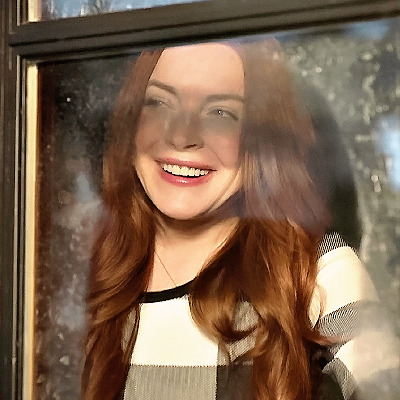


















★﹐lindsay lohan as sierra belmont in falling for christmas (2022).﹗﹑
+psd by the talented @miniepsds & screencaps by the amazing @neverscreens ♡
#lindsay lohan icons#sierra belmont icons#falling for christmas icons#icons#christmas icons#xmas icons#holiday icons#holidays icons#film icons#movie icons#movies icons#cinema icons#lindsay lohan#sierra belmont#falling for christmas#christmas#xmas#holiday#holidays#film#movies#romance#comedy#romcom icons#romcom#romance icons
17 notes
·
View notes